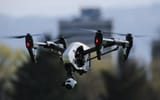Anonymous
7/26/2025, 8:46:21 AM No.106031300
Wondering as a codelet, not very tech savvy but I admire the will to that kind of expertise. No bully.
How accurate does autonomous robot software have to be for the deployment of the robot to be viable/profitable? Are there cases where you could have an intermediate range of error-rate where the robot can still be profitable even if you need human workers to monitor for and correct mistakes? I'm sure it's a matter of degree and it varies by the case...
I understand factory robots work because their actuation is rigid and predictable enough that ordinary algorithms work just fine, no "AI" methods needed. Roombas and similar devices are worth selling because some consumers can tolerate their degree of inaccuracy, I guess due to the nature of the task. But to scale autonomous robots in other areas, how low do error-rates have to be for a viable product?
Are recent improvements in virtual AI agents and AI generation/interpretation of videos and 3D models a sign that robots will "soon" have the ability to interact with an active 3D environment accurately enough for commercial viability? How wide is the difficulty gap in that comparison?
How accurate does autonomous robot software have to be for the deployment of the robot to be viable/profitable? Are there cases where you could have an intermediate range of error-rate where the robot can still be profitable even if you need human workers to monitor for and correct mistakes? I'm sure it's a matter of degree and it varies by the case...
I understand factory robots work because their actuation is rigid and predictable enough that ordinary algorithms work just fine, no "AI" methods needed. Roombas and similar devices are worth selling because some consumers can tolerate their degree of inaccuracy, I guess due to the nature of the task. But to scale autonomous robots in other areas, how low do error-rates have to be for a viable product?
Are recent improvements in virtual AI agents and AI generation/interpretation of videos and 3D models a sign that robots will "soon" have the ability to interact with an active 3D environment accurately enough for commercial viability? How wide is the difficulty gap in that comparison?
Replies:
